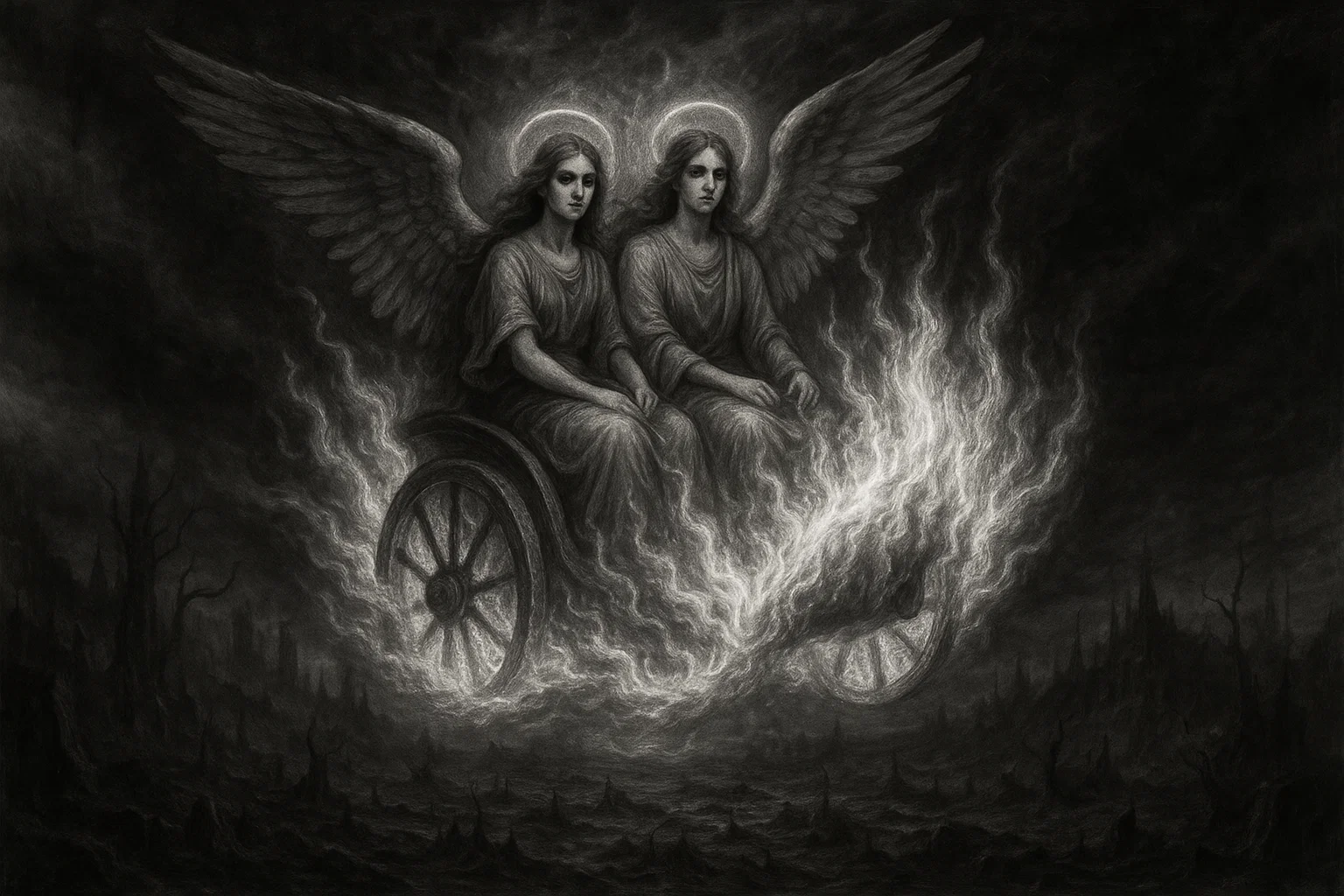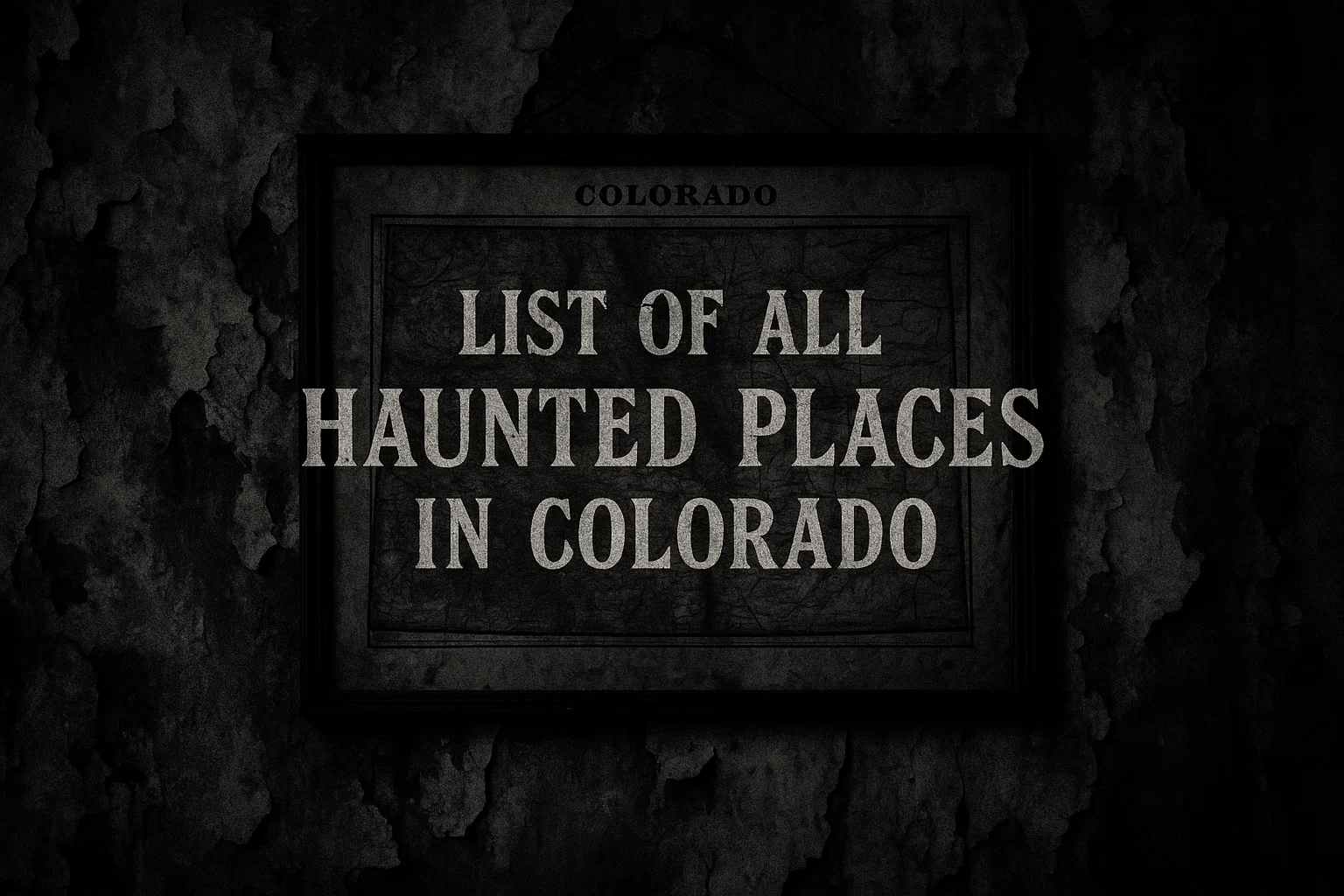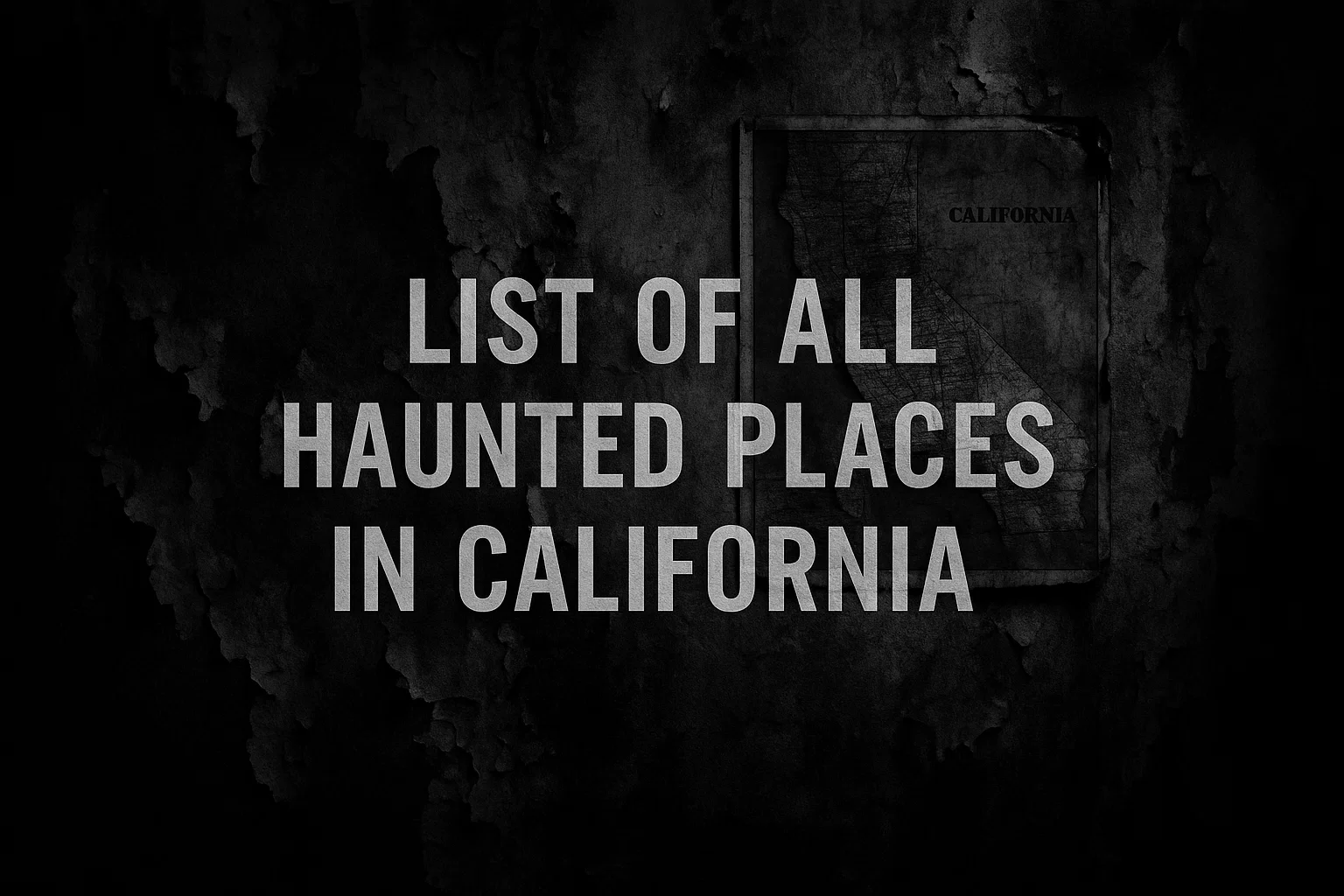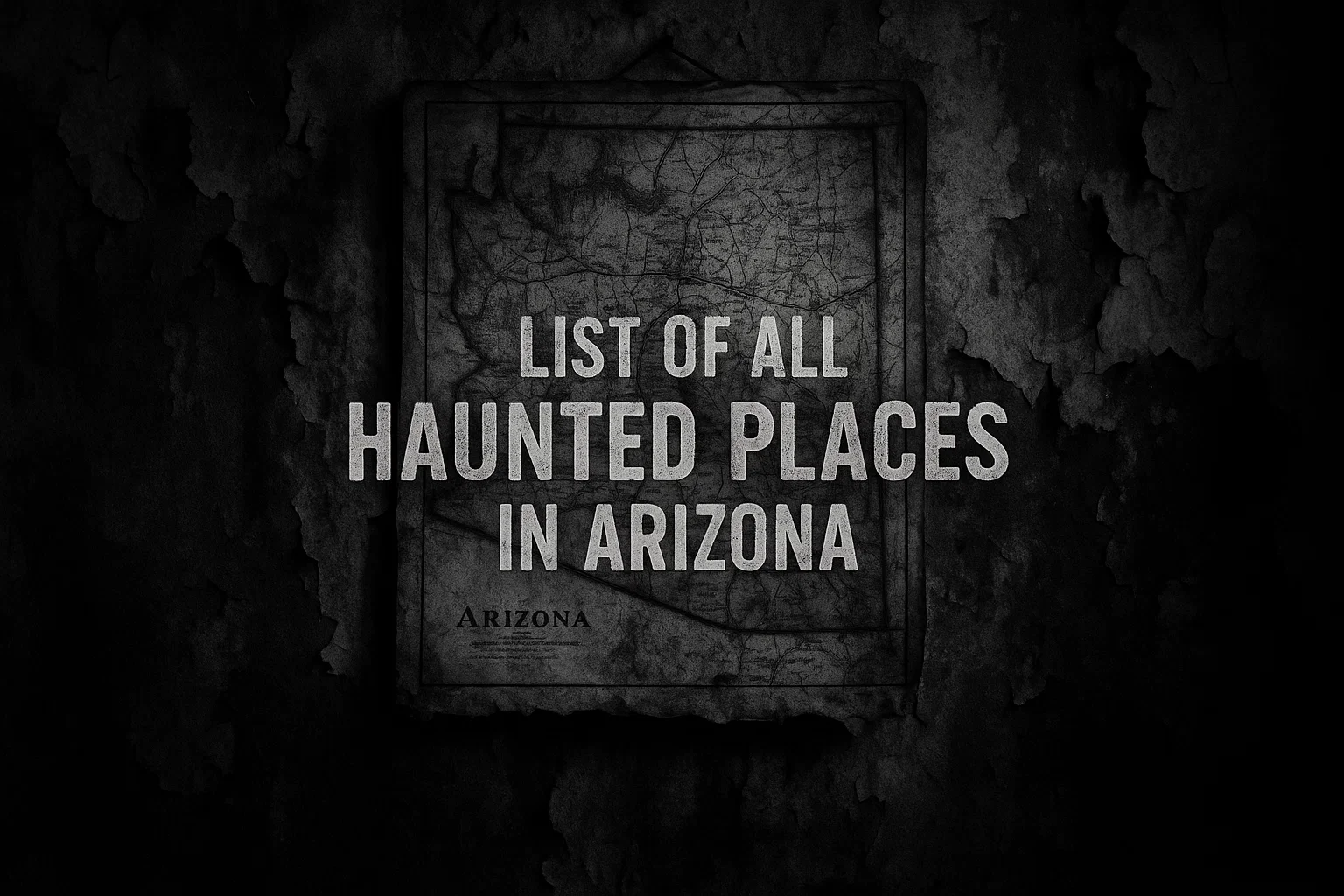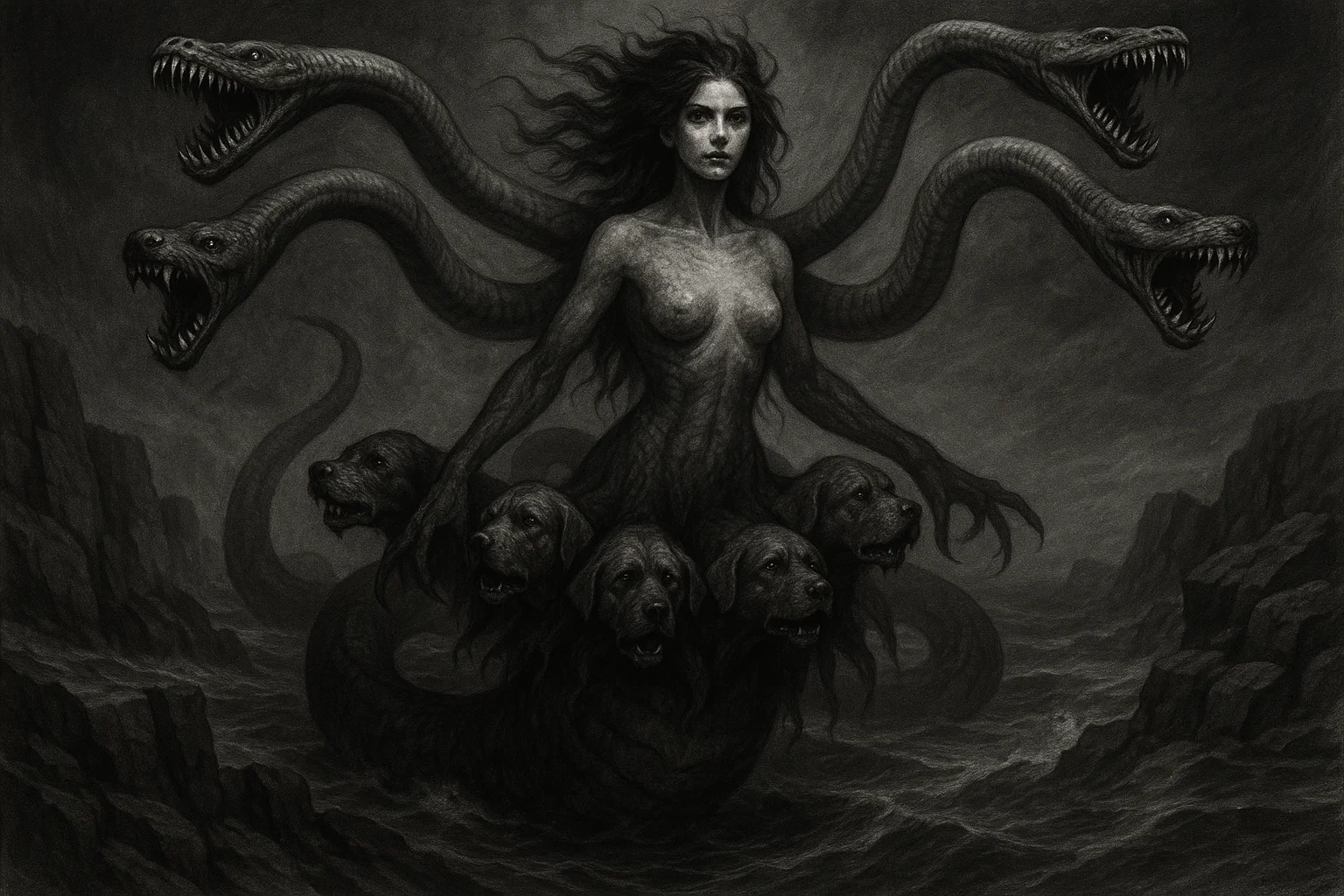Belial is a notorious demon in Jewish and Christian demonology, known for his cunning deception and association with wickedness. Often called the Lord of Lies or King of Evil, he commands vast legions of demons and wields powers that twist human desires and politics.
His name appears in ancient texts like the Hebrew Bible and Dead Sea Scrolls, as well as Renaissance grimoires such as the Ars Goetia. With a striking appearance as two beautiful angels in a fiery chariot, Belial blends charm with danger, making him a captivating figure in occult lore.
This comprehensive article explores his etymology, historical mentions, appearance, powers, role in Hell’s hierarchy, astrological ties, and cultural impact, offering a detailed guide for anyone curious about this Prince of Darkness.
Summary
Key Information
Below is a detailed table summarizing Belial’s key attributes:
| Attribute | Details |
|---|---|
| Name | Belial, Beliar, Belhor, Beliall, Berial, Bylyl, Beliya’al, Belias, Matanbuchus, Mastema |
| Title | King of Evil, Prince of Darkness, Lord of Lies, Master of Deception, Lord of Arrogance, Angel of Hostility |
| Gender | Male |
| Hierarchy | King (68th spirit in Ars Goetia), one of four princes in Book of Abramelin |
| Servitors | 80 legions of demons and 50 legions of spirits (Ars Goetia) |
| Powers | Grants senatorships, secures favor of friends or foes, provides excellent familiars, induces wickedness, guilt, fornication, wealth, pollution, deceit, arrogance |
| Appearance | Two beautiful angels in a fiery chariot, fair and eloquent, sometimes devil-like with horns and wings |
| Etymology | From Hebrew Beli ya’al (“without worth”), possibly “yokeless” or “never to rise” |
| Associated Figures | Lucifer, Satan, Beelzebub, Melchiresha, Melchizedek, Michael, Ham, Egyptian sorcerers |
| Role | Leads demons, tempts humanity, opposes divine order, manipulates politics and emotions |
| Symbolism | Wickedness, lawlessness, lies, arrogance, chaos, impurity, rebellion, darkness |
| Weaknesses | Requires offerings or sacrifices for truthful answers, constrained by divine power or specific rituals |
| Superior Demon | Lucifer (created after him in Ars Goetia) |
| Opposing Angel/Saint | Michael (in Dead Sea Scrolls), possibly Francis of Paola |
| Equipment/Tools | Fiery chariot, sigil for summoning, possibly a bottle (folklore) |
| Pantheon | Abrahamic (Jewish and Christian demonology), possible Canaanite roots |
Etymology
The name Belial comes from the Hebrew term Beli ya’al, meaning “without worth” or “worthless.” This combines beli (“without”) and ya’al (“to be of value” or “to profit”), suggesting a state of moral or spiritual emptiness.
In the Hebrew Bible (circa 1200–100 BCE), Belial initially described people who were corrupt or useless, as seen in phrases like “sons of Belial” (Deuteronomy 13:13, circa 600 BCE).
Scholars propose alternative meanings, such as Beli ol (“without yoke”), implying lawlessness or rebellion against authority, which aligns with Belial’s role as a demon who defies divine order. Another interpretation, “never to rise” (Beli ya’al), suggests eternal damnation, fitting his later depiction as a fallen angel.
In Greek translations, such as the Septuagint (circa 250 BCE), Belial appears as Beliar, possibly a phonetic shift or scribal variation, emphasizing his adversarial nature.
You May Also Like: Who Is Akesoli: The Pain-Bringer Demon of Amaimon’s Court?
Some texts, like the Testament of the Twelve Patriarchs (circa 100 BCE–100 CE), use Beliar to describe a satanic figure who tempts humanity. The Dead Sea Scrolls (circa 300 BCE–100 CE) solidify Belial as a personified demon, often called Beliya’al or Mastema (meaning “hostility”).
Names like Belhor, Beliall, Berial, Bylyl, or Matanbuchus appear in later grimoires, reflecting linguistic adaptations across Latin, French, and English texts.
The name Matanbuchus may derive from Hebrew matan (“hope”) and buch (“confusion”), hinting at Belial’s deceptive promise of false rewards. These variations highlight how Belial’s name evolved from a descriptive term to a symbol of ultimate evil in Jewish and Christian traditions.
Historical and Mythological Background
Belial’s presence in demonology stretches across millennia, weaving through ancient Jewish scriptures, Christian texts, apocryphal writings, medieval grimoires, and folklore.
Biblical Foundations
In the Hebrew Bible (circa 1200–100 BCE), Belial appears 27 times, primarily as a term for morally corrupt or worthless individuals, not yet a personified demon.
The Masoretic Text uses Belial to describe those who defy God’s law. In Deuteronomy 13:13 (circa 600 BCE), “children of Belial” entice Israelites to worship false gods, leading to their condemnation.
In Judges 19:22 (circa 1000–600 BCE), “sons of Belial” are violent men who assault a Levite’s concubine, sparking a war. 1 Samuel 2:12 (circa 1000 BCE) labels corrupt priests Hophni and Phinehas as “sons of Belial” for their sacrilegious acts, while 2 Chronicles 13:7 (circa 400 BCE) describes rebels against King Abijah as “vain men, children of Belial.”
These references establish Belial as a symbol of rebellion, immorality, and opposition to divine order, setting the stage for his later demonization.
Dead Sea Scrolls and Apocalyptic Roles
The Dead Sea Scrolls (circa 300 BCE–100 CE), discovered at Qumran, mark a pivotal shift, portraying Belial as a personified demon and cosmic adversary.
In the War Scroll (1QM, circa 100 BCE), Belial is the Angel of Hostility, leading the Sons of Darkness—a coalition of evil forces—against the Sons of Light, guided by Archangel Michael.
The text describes a cosmic battle during the end times, with Belial orchestrating chaos: “But for corruption thou hast made Belial, an angel of hostility. All his dominion is in darkness, and his purpose is to bring about wickedness and iniquity.” This narrative casts Belial as a direct opponent of God, commanding demonic legions in an apocalyptic war.
The Damascus Document (CD, circa 200 BCE) warns of Belial’s influence during the Antichrist’s era, stating, “Belial shall be let loose against Israel,” trapping people with his “three nets”: fornication, wealth, and pollution of the sanctuary.
You May Also Like: Maple Hill Cemetery Haunting: Ghost Child Sightings and Eerie Legends
These nets represent temptations that corrupt spiritually and socially, reinforcing Belial’s role as a tempter. The Melchizedek Document (11Q13, circa 100 BCE) depicts Belial as a malevolent force opposing Melchizedek, a messianic figure who delivers the righteous from Belial’s grasp. Here, Belial is described as ruling “all the spirits of his lot,” suggesting command over a vast demonic host.
In the Testaments of the Twelve Patriarchs (circa 100 BCE–100 CE), Belial actively tempts the tribes of Israel. For example, in the Testament of Reuben, he incites lust, leading to sin: “The spirit of Beliar shall lead them astray.” The Testament of Dan portrays Belial as a deceiver who blinds people to righteousness, urging violence and greed.
Early Christian and Apocryphal Narratives
Early Christian texts build on Jewish traditions, equating Belial with Satan or a chief demon. In 2 Corinthians 6:15 (circa 55–57 CE), the Apostle Paul contrasts “Christ with Belial,” framing him as an ultimate evil: “What concord hath Christ with Belial?” This suggests Belial’s status as a primary adversary to Christian values.
The Ascension of Isaiah (circa 100 CE) describes Beliar as the Great Angel and King of this world, ruling over humanity’s sins and performing false miracles to deceive. In one story, Beliar possesses Emperor Nero, inciting persecution of Christians, showcasing his influence over earthly rulers.
The Sybilline Oracles (circa 100 BCE–200 CE) portray Beliar as a false messiah from the tribe of Dan, performing wonders like raising the dead to mislead people. This aligns with Antichrist narratives, where Belial seeks to supplant divine authority.
The Book of Jubilees (circa 150 BCE) mentions Mastema, sometimes identified with Belial, as a demon who tests humanity, similar to Satan in the Book of Job. In one tale, Mastema urges God to test Abraham’s faith by demanding Isaac’s sacrifice (Genesis 22:1–19, circa 600 BCE), highlighting Belial’s role as an accuser.
Encounters with Biblical Figures
Several myths detail Belial’s interactions with key figures. In the Testament of Solomon (circa 1st–5th century CE), Belial is among demons bound by King Solomon using a magical ring from Archangel Michael.
Solomon interrogates Belial, who reveals his powers to grant favor and senatorships but admits his defeat by divine forces. In one story, Belial attempts to deceive Solomon by appearing as a radiant angel, but Solomon’s wisdom and the ring’s power trap him in a brass vessel, sealed with sacred names.
This vessel, containing Belial and 72 other demons, is buried under the Temple, only to be unearthed by Babylonians who worship Belial as a god, as recounted in Reginald Scot’s The Discoverie of Witchcraft (1584).
Another legend ties Belial to the Egyptian sorcerers who opposed Moses during the Exodus (circa 1300 BCE, per biblical chronology).
In 2 Timothy 3:8 (circa 62–64 CE), these sorcerers, named Jannes and Jambres in apocryphal texts, are linked to Belial’s influence, using dark magic to mimic Moses’ miracles (Exodus 7:11–22). Belial empowers their sorcery, but God’s power through Moses and Aaron overcomes them, proving Belial’s inferiority.
Medieval Demonology and Occult Traditions
In medieval Christian demonology, Belial rises to prominence as a Prince of Hell. The Book of Abramelin (14th–15th century) names him among four chief princes—Lucifer, Leviathan, Satan, and Belial—overseeing eight sub-princes, including Astaroth, Asmodeus, and Beelzebub.
This hierarchy positions Belial as a strategic leader, commanding legions to corrupt humanity. The Pseudomonarchia Daemonum by Johann Weyer (1577) describes Belial as a King created after Lucifer, commanding 80 legions of demons and 50 legions of spirits. Weyer notes that Belial requires offerings or sacrifices to provide truthful answers, reflecting his deceitful nature.
You May Also Like: Cedarhurst Mansion Haunting: Huntsville’s Most Famous Ghost?
The Ars Goetia (circa 1650), part of the Lesser Key of Solomon, lists Belial as the 68th spirit, a Mighty and Powerful King who grants senatorships and favor. His summoning requires a lamin (pendant) with his sigil and divine invocations to counter his lies.
In Christian demonology, Sebastian Michaelis (1613) classifies Belial as a fallen angel from the Order of Virtues, tempting through arrogance and opposed by Saint Francis of Paola. Michaelis recounts a tale where Belial possesses a young girl, only to be exorcised through prayers to Francis of Paola, demonstrating his vulnerability to divine intervention.
Folklore and Legends
Medieval and Renaissance folklore enrich Belial’s mythos with vivid stories. In The Discoverie of Witchcraft (1584), Reginald Scot narrates how King Solomon imprisoned Belial and other demons in a brass bottle, sealed with magical sigils.
After Solomon’s death, Babylonians discovered the bottle and, believing it held treasure, broke it open, releasing Belial. Mistaking him for a deity, they built altars and offered sacrifices, only for Belial to demand further worship, spreading corruption. This tale, echoed in Arabian Nights stories, underscores Belial’s ability to deceive entire civilizations.
Another legend, found in Jewish folklore, describes Belial challenging Archangel Michael in a cosmic duel before the creation of humanity. Belial, as a fallen angel, claims dominion over Earth, but Michael binds him with divine chains, casting him into the abyss.
This story, though apocryphal, reinforces Belial’s rivalry with Michael, seen in the Dead Sea Scrolls. In Christian folklore, Belial tempts monks and nuns, appearing as a beautiful figure to incite lust or pride, only to be repelled by prayers or holy relics.
Interactions with Other Demons
Belial’s myths often involve other demons. In the Book of Abramelin, he collaborates with Lucifer, Leviathan, and Satan to orchestrate Hell’s plans, each prince overseeing different sins.
Belial’s focus on arrogance and deception complements Beelzebub’s pestilence and Asmodeus’s lust. In the Ars Goetia, Belial works alongside Astaroth and Paimon, granting favor and familiars to strengthen Hell’s influence.
A lesser-known tale from medieval occult texts describes Belial and Melchiresha (a female demon of deceit) manipulating a king to wage an unjust war, only to be thwarted by a prophet’s intervention, highlighting their combined cunning.
Cultural and Theological Impact
Belial’s stories reflect cultural fears of moral decay and rebellion. In Jewish tradition, he opposes the covenant with God, leading Israelites astray through idolatry and sin.
In Christianity, he embodies satanic defiance, challenging Christ’s authority. His prominence in occult rituals, requiring elaborate safeguards like sigils and offerings, underscores his potency.
Legends of his imprisonment by Solomon or defeat by Michael emphasize divine triumph over evil, yet his ability to deceive kings and nations highlights his enduring threat.
In medieval Europe, Belial was blamed for witchcraft and heresy, with accused witches claiming he granted them power, as seen in trial records from the 15th–17th centuries.
Specific Myths and Encounters
The Temptation of Ham: The Pseudomonarchia Daemonum (1577) claims Belial taught Ham, son of Noah, occult sciences after the Great Flood (circa 2348 BCE, per biblical chronology). Ham used Belial’s knowledge to defy God’s will, spreading forbidden wisdom that led to idolatry among his descendants.
You May Also Like: The Last Ride at Midnight | Horror Story
The False Prophet of Samaria: In the Sybilline Oracles, Beliar appears in Samaria (circa 100 BCE), performing miracles to deceive Jews and Gentiles. He raises mountains and stops the sun, but Gabriel intervenes, casting him into fire, showing Belial’s limits against divine power.
The Possession of a Nun: A 16th-century Christian legend recounts Belial possessing a French nun, causing her to blaspheme and seduce others. Saint Francis of Paola exorcised her in 1509, using relics and prayers, as documented by Sebastian Michaelis. This story emphasizes Belial’s targeting of the pious.
The Babylonian Worship: After escaping Solomon’s bottle, Belial convinced Babylonians (circa 600 BCE) to build a golden idol in his likeness, demanding human sacrifices. The prophet Daniel exposed his deception, leading to the idol’s destruction, as per apocryphal tales.
Historical Mentions
The table below lists key texts mentioning Belial with their publication years, descriptions, and direct excerpts:
| Text/Grimoire | Year | Description | Excerpt |
|---|---|---|---|
| Hebrew Bible | ~1200–100 BCE | Describes wicked people as “sons of Belial” | “Certain men, the children of Belial, are gone out from among you…” (Deuteronomy 13:13) |
| War Scroll (1QM) | ~100 BCE | Belial as Angel of Hostility, leader of Sons of Darkness | “But for corruption thou hast made Belial, an angel of hostility…” |
| Damascus Document (CD) | ~200 BCE | Belial as a tempter during the Antichrist’s era | “Belial shall be let loose against Israel…” |
| Testaments of the Twelve Patriarchs | ~100 BCE–100 CE | Belial as a satanic tempter | “The spirit of Beliar shall lead them astray…” (Testament of Reuben) |
| 2 Corinthians | 55–57 CE | Contrasts Christ with Belial as an evil force | “What concord hath Christ with Belial?” (2 Corinthians 6:15) |
| Book of Abramelin | 14th–15th century | Belial as one of four princes of Hell | [Specific excerpt unavailable; lists Lucifer, Leviathan, Satan, Belial] |
| Pseudomonarchia Daemonum | 1577 | Belial as a King requiring offerings | “Belial is a king, and was created next after Lucifer…” |
| Ars Goetia | ~1650 | Belial as 68th spirit, King with 80 legions | “The Sixty-eighth Spirit is Belial. He is a Mighty and a Powerful King…” |
What Belial Looks Like
Belial’s appearance is designed to deceive, blending beauty with menace. In the Ars Goetia (circa 1650), he appears as two beautiful angels seated in a chariot of fire, radiating grace and divinity to mask his evil nature.
The chariot, glowing with flames, echoes biblical visions like Ezekiel’s chariot (Ezekiel 1:4–28, circa 600 BCE), enhancing his allure. His comely voice is soothing yet manipulative, drawing summoners into his web of deceit.
In John Milton’s Paradise Lost (1667), Belial is described as fair, eloquent, and vile beneath his looks, with a demeanor that hides his lewdness and cowardice.
You May Also Like: The Girl in the Red Skirt (Hanako-san) | Horror Story
Some medieval depictions, particularly in occult art, portray him as a devil-like figure with black wings, sharp horns, and a forked tail, emphasizing his demonic side.
In modern interpretations, such as the Pathfinder role-playing game (2009), Belial has a dual form: one half angelic with golden features, the other grotesque with twisted limbs, symbolizing his duplicity.
This shapeshifting ability allows Belial to adapt his form to suit his manipulative goals, making him a visually striking and unpredictable presence.
Powers and Abilities
Belial’s powers focus on manipulation and influence, setting him apart from demons with more destructive abilities.
According to the Ars Goetia, his key powers include:
- Distributing Senatorships: Belial grants positions of political power, such as titles or influence in governance, appealing to those seeking authority.
- Securing Favor of Friends or Foes: He manipulates relationships, fostering alliances or sowing discord to serve the summoner’s goals.
- Granting Excellent Familiars: Belial provides powerful spirit servants, skilled in espionage or influence, to aid in occult tasks.
The Dead Sea Scrolls describe Belial’s “three nets” to trap humanity: fornication (sexual temptation), wealth (material greed), and pollution of the sanctuary (spiritual corruption). These align with his role as a tempter who exploits human weaknesses.
In Christian demonology, Sebastian Michaelis (1613) attributes arrogance to Belial, suggesting he inspires pride and self-importance. The Testaments of the Twelve Patriarchs note his ability to incite guilt and lust, driving people to sin.
Unlike Beelzebub’s insect control or Asmodeus’s lustful chaos, Belial’s powers are subtle, targeting social and emotional spheres. His truthful answers require offerings or sacrifices, as he is naturally deceitful, making rituals complex and risky.
Role in the Hierarchy of Hell
Belial holds a commanding position in the hierarchy of Hell. In the Ars Goetia, he is the 68th spirit, a King created immediately after Lucifer, overseeing 80 legions of demons and 50 legions of spirits.
The Book of Abramelin (14th–15th century) elevates him to one of four princes of Hell, alongside Lucifer, Leviathan, and Satan, granting him authority over sub-princes like Astaroth, Asmodeus, and Beelzebub.
In some traditions, he serves as a minister to Arcan or answers to Amaymon, a king of the East, but his high rank is consistent across texts. Belial’s role involves orchestrating demonic strategies, tempting humanity, and opposing divine order.
His political influence, granting senatorships and favor, makes him a key player in Hell’s schemes, manipulating earthly power structures to spread chaos.
Astrological Associations and Symbolism
Belial’s astrological associations are not explicitly detailed in grimoires, but occult traditions offer insights. He is often linked to Saturn, the planet of discipline, restriction, and darkness, reflecting his role in sowing chaos and moral decay.
Alternatively, Mars—symbolizing conflict and aggression—may align with his warlike tendencies as the Angel of Hostility. In Kabbalistic demonology, Belial rules the qlippoth of Ghogiel (opposite the sephirah Chesed on the Tree of Life), representing obstruction and chaos, and the 11th qlippoth named Belial, symbolizing lawlessness.
You May Also Like: Alabama’s Chunchula Wolf Woman: Myth or Real Monster?
Elementally, Belial is tied to fire (his fiery chariot and passionate temptations) and earth (material wealth and corruption). His symbols include the fiery chariot, dual angels (deception), broken chains (rebellion), and darkness (opposition to divine light).
The Dead Sea Scrolls associate him with hostility and impurity, contrasting him with Michael’s light. His “three nets” (fornication, wealth, pollution) symbolize temptations that disrupt spiritual and social order, making Belial a potent emblem of defiance.
Sigil
Belial’s sigil in the Ars Goetia is a unique geometric design, featuring sharp angles and curved lines that evoke his regal yet deceptive nature. Drawn on parchment or engraved on a lamin (pendant), it is essential for summoning rituals.
The sigil channels Belial’s energy, allowing exorcists to compel his obedience, but requires offerings like incense or sacrifices to ensure truthful responses.
The ritual involves a protective triangle and divine invocations to counter Belial’s deceit, emphasizing the need for precision and courage.
Media and Pop Culture
Belial has left a mark on modern pop culture, appearing in various media:
- Literature: In John Milton’s Paradise Lost (1667), Belial is a fallen angel whose eloquence masks cowardice and lewdness, advocating peace among demons to hide his treachery.
- Video Games: In Diablo III (2012), Belial is a Great Evil and Lord of Lies, a cunning boss manipulating players. In Granblue Fantasy (2014), he is a fallen angel with a seductive yet sinister persona.
- Music: The Swedish black metal band Lord Belial (formed 1992) draws its name from him, using his imagery in lyrics about darkness and rebellion.
- Film and TV: Belial appears in Basket Case (1982) as a monstrous twin, and in Supernatural (2005–2020), his name is referenced in demonic contexts, though not as a main character.
Comparison to Other Demons
The table below compares Belial with other prominent demons:
| Demon Name | Rank | Primary Powers | Appearance | Associated Symbols |
|---|---|---|---|---|
| Belial | King/Prince | Grants senatorships, manipulates favor, grants familiars | Two angels in fiery chariot | Darkness, lies |
| Beelzebub | Prince/King | Controls insects, spreads false gods | Gigantic fly or monstrous being | Flies, decay |
| Astaroth | Great Duke | Reveals secrets, procures favor | Angelic or rides a dragon | Dragon, serpent |
| Bael | King | Invisibility, rules 66 legions | Cat, toad, man, or combinations | Crown, scepter |
| Paimon | King | Teaches arts and sciences | Man with woman’s face, on a camel | Camel, crown |
| Asmodeus | King | Incites lust, gambling | Three-headed man | Fire, sword |
| Lucifer | Archangel/Fallen | Pride, enlightenment, rebellion | Beautiful angel or dragon | Light, morning star |
| Satan | Adversary | Temptation, accusation | Human or goat-like | Serpent, goat |
| Mammon | Ambassador | Greed, wealth | Not specified | Coins, treasure |
| Leviathan | Sea Monster | Pride, envy, wrath | Sea serpent or dragon | Water, abyss |
Belial’s focus on political manipulation and deception contrasts with Beelzebub’s pestilence or Asmodeus’s lust, emphasizing subtle influence over overt destruction.
Conclusion
Belial stands as a towering figure in demonology, embodying the dangers of deception and lawlessness. From his roots in the Hebrew Bible as a term for wickedness to his role as a King of Hell in grimoires, his story spans centuries of religious and occult thought.
His powers to grant power and manipulate relationships, combined with his alluring yet treacherous appearance, make him a complex demon.
Whether in ancient texts or modern pop culture, Belial remains a symbol of rebellion and chaos, captivating those who explore the darker side of the supernatural.

